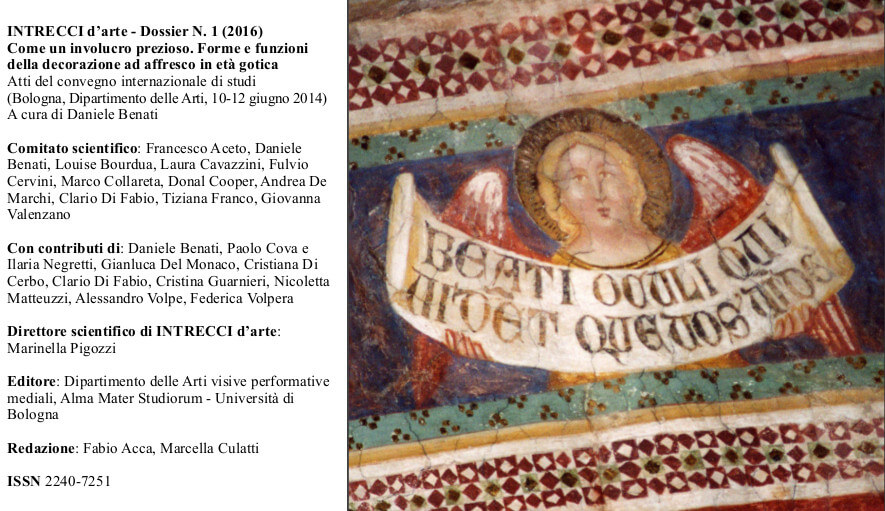Introduction
DOI:
https://doi.org/10.6092/issn.2240-7251/6427Abstract
This Dossier – the first of «Intrecci d’Arte» – collects some of the papers presented at an international conference organized in 2014 by the PhD course in History of Art of the University of Bologna, in collaboration with The PhD courses of the Universities of Florence, Genoa, Naples, Padua, Pisa, Siena and Venice-Verona. In presenting the topics, the curator focuses on the ‘main’ function of the fresco decoration in the Gothic period. The use of embellishing the sacred buildings with great fresco cycles aims to indicate the sacredness of the place and to represent the message of God's Word through images. According to Bruno Toscano, in fact, the main function of fresco cycles is connected to their setting. Carefully studied iconographic programs address to educated people, while the rich colors of the painted walls and the forcefulness of single images have to appeal the devotees, even if they weren’t able to understand the meaning of them. This aspect also explains the controversy born in the Franciscan Order concerning the pomp of the decoration, in contrast with the Vote of Poverty. During the Fourteenth Century, the custom of votive frescoes commissioned by single devotees changes the relationship between audience and images.Downloads
Published
How to Cite
Issue
Section
License
Copyright (c) 2016 Daniele Benati
The copyrights of all the texts on this journal belong to the respective authors without restrictions.
This journal is licensed under a Creative Commons Attribution 4.0 International License (full legal code).
See also our Open Access Policy.
Images and photographs may have different terms of license.
In making material available online the Journal acts in good faith. Parties who have questions or who wish to contest the use of specific works may contact the Editor in chief.
Metadata
All the metadata of the published material is released in the public domain and may be used by anyone free of charge. This includes references.
Metadata — including references — may be re-used in any medium without prior permission for both not-for-profit and for-profit purposes. We kindly ask users to provide a link to the original metadata record.






